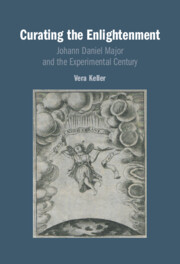Book contents
7 - Archaeology
from Part III - Reworking Disciplines
Published online by Cambridge University Press: 07 December 2024
Summary
Megaliths, burial mounds, and other remnants of ancient human civilization littered the region. No textual sources about them survived. Competing with ancient Greece and Rome, local scholars composed rival visions of antiquity that supported Swedish, Danish, or German imperial ambitions. By contrast, Major developed a distinctive approach to prehistory that served no political interests. Assuming a prehistoric state of human desperation, Major reasoned about prehistory by using the intellectual approaches of the history of learning and experimental philosophy. He developed a multiyear research project that deployed extensive excavations, purposeful travel, distinctive visual techniques, and novel note-taking methods. He identified so-called thunderstones as ancient artifacts as well as the varying deployment of stone, bronze, and iron in different time periods through the use of stratigraphy and the ordering of finds by the materials used. In 1688, he opened a public museum and conference hall where members of opposing sides in the war could discuss the history of their shared region. Although this institution did not long survive Major’s death, his archaeological approach did.
Keywords
- Type
- Chapter
- Information
- Curating the EnlightenmentJohann Daniel Major and the Experimental Century, pp. 197 - 240Publisher: Cambridge University PressPrint publication year: 2024

